Andrew Paul Wood – 10 November, 2011
A playful, free-associative, scrambled logic lies at the heart of Edwards + Johann's practice. Rather than answering anything, it just provokes more questions - which actually gives it more utility than if it was entirely static and easily digested. The effect is intensely psychological and theatrical.
Christchurch
Edwards + Johann
Faculty of Wonder: Lost & Found
1 November - 12 November 2011
“People assume that time is a strict progression of cause to effect, but actually from a non-linear, non-subjective viewpoint - it’s more like a big ball of wibbly wobbly… timey wimey… stuff.”
- Dr Who, Blink, 2007
With artists Victoria Edwards and Ina Johann, Edwards + Johann, the results are never linear or conform to an easily interpretable structure. Quite often the references are personal and hermetic, requiring some teasing out or at least some imaginative invention on the part of the viewer - a bit like the savants of the Renaissance trying to interpret Egyptian hieroglyphs prior to the discovery of the Rosetta Stone or a mysterious language created by a gothic pair of autistic twins.
Although Faculty of Wonder: Lost & Found at Chambers@241 (a revamping of the version that showed at Lopdell House in May this year) is an organic and internally consistent whole, flashes of actual revelation are somewhat chaotic - but that’s part of the fun, somewhat like a Joseph Cornell box. If Lewis Carroll was the Tolstoy of the nursery, Edwards + Johann are the Gilbert and George of Wonderland.
In part the installation is a response to February’s Christchurch earthquake that destroyed the artist’s shared studio in Bexley. It is a record of time, place, and process, but not in a logical, causal way. On one wall the viewer finds Live to tell the tale - a scattering of 1920s postcards in sealed frames. The postcards’ emulsion surfaces have run and been ablated, and then re-infused with photographic dyes. These came from an album of old postcards that had been damaged by liquefaction flooding, and re-imagined into new artworks.
On another wall, a video work, Damp pickings (a bit Blair Witch-y in its relative crudeness, and signalled by a raucous birdcall) seems to record a small red toadstool in a European forest from various angles. Although completely unrelated in its original intent, reused in this new context it seems to suggest regeneration and growth from decay.
An unfinished carved stool, dug from the shavings of the joinery workshop-turned new studio behind Chambers@241, has been given a new top. A mutated standard lamp and island-like discs of carpet on the wooden floor suggest a kind of fractured domesticity. An old German picture guide to medicinal herbs and wildflowers suggests the need for healing. Indeed, given that some of the Lopdell show had been made before the quake, this redux is much more, though subtly, about the emotional space of the quake.
Large photographic prints, part of the installation All over the place, are self portraits of the artists themselves, but so heavily disguised by swathes of fabric and accumulated disguise, that they barely seem human, let alone recognisable. The result is comedic and unsettling. Identity has been lost. More self portraits, hand-coloured photographs Fallen awake and dressed in clothes I don’t remember putting on, were made while the artists were in the Perth Museum and Art Gallery, Scotland during May/June 2010. Others have been photographed against a quake-cracked wall at home when the studio was made unusable. All of these are separate moments, some unrelated, but all somehow manage to speak to each other within the loose gestalt the artists provide. We are reminded of Montaigne’s celebrated analogy of a conversation being like a tennis match - we lob our ball over the net and hope someone bats it back.
This playful, free-associative, scrambled logic lies at the heart of Edwards + Johann’s practice. If it feels right, it works, and they do it. Rather than answering anything, it just provokes more questions - which actually gives it more utility than if it was entirely static and easily digested. The effect is intensely psychological and theatrical.
Andrew Paul Wood
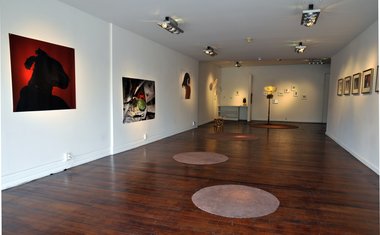
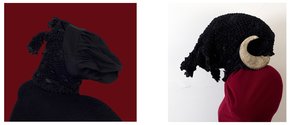
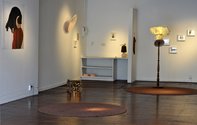
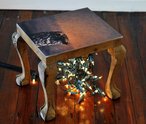

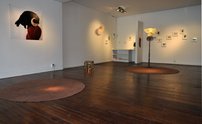

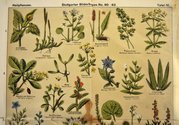
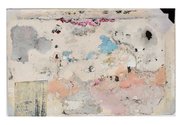
 Two Rooms presents a program of residencies and projects
Two Rooms presents a program of residencies and projects Advertising in this column
Advertising in this column



This Discussion has 0 comments.
Comment
Participate
Register to Participate.
Sign in
Sign in to an existing account.